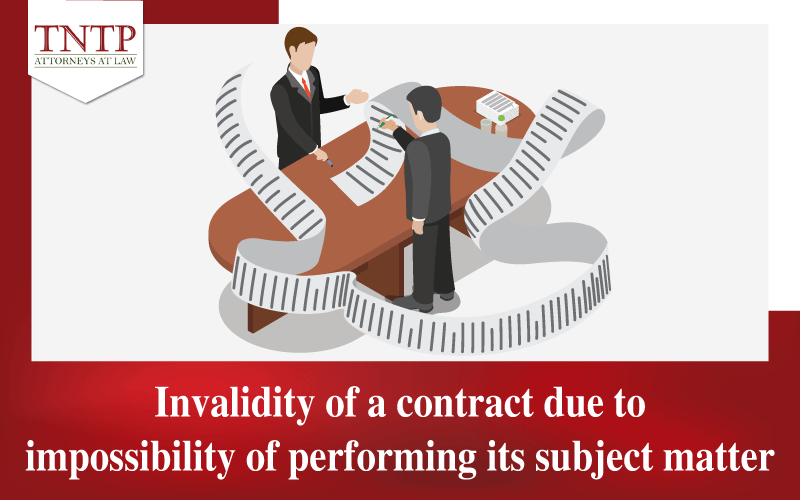Assets for capital contribution and their valuation
Valuation of contributed assets is an important and mandatory stage if enterprise members contribute capital with contributed assets other than Vietnam Dong, convertible foreign currencies, and gold. In this article, TNTP will analyze the provisions of the law on “assets for capital contribution and their valuation” to help enterprise members and founding shareholders limit possible disputes about the valuation of contributed assets.
1. Assets for capital contribution
According to the current Vietnamese law, a capital contribution is defined as individuals and organizations that contribute assets to form the company’s charter capital, including capital contribution to establish a company or additional charter capital contribution after the company has been established. Thus, a capital contribution can be made at two specific times, when establishing the business and during the operation of the enterprise.
Under Article 34 of the Law on Enterprises 2020, contributed assets include VND, convertible foreign currencies, gold, land use right (LUR), intellectual property rights, technologies, technical secrets, and other assets that can be converted into VND.
Under Article 35 of the Law on Enterprises 2020, members of limited liability companies, partnerships, and shareholders of joint stock companies must transfer ownership of assets contributed to capital to the company. Therefore, depending on the type of asset contributed capital, it is necessary to meet some or all of the following conditions:
- Assets for capital contribution must be under the lawful right to ownership or right to use of capital contributors and are not disputed, not restricted from the right to disposition by agreement or by law;
- Assets for capital contribution can transfer ownership or use rights to the company;
- Must have all documents certifying ownership of the property subject to ownership registration; certificate of land use rights and ownership of houses and other land-attached assets if the assets are land use rights, ownership of houses, and other land-attached assets.
2. Valuation of contributed assets
Methods of valuation of contributed assets to the company are regulated in Enterprise Law 2020. For capital contribution upon establishment of an enterprise, the valuation method will be chosen by members/partners/founding shareholders. For capital contribution during the operation of an enterprise, the valuation method will be selected by the owner or the Board of Members/Partners (for limited liability companies and partnerships) or the Board of Directors (for joint stock companies) and the contributor:
- Self-valuation according to the principle of consensus; or
- Valuation by a valuation organization.
To ensure objective valuation results, enterprises can consider hiring an agency or organization as a third party to carry out valuation activities for assets contributed in both stages of capital contribution: capital contribution to establish by the enterprise and capital contribution to increasing charter capital.
Regardless of which valuation method is chosen, the valuation of assets contributed must be based on the principle of “consensus”:
- In case of valuation of contributed assets upon establishment of an enterprise: Assets contributed upon establishment of an enterprise shall be valued by members/partners/founding shareholders by consensus or by a valuation organization. In the latter case, the value of contributed assets must be accepted by more than 50% of the members/partners/founding shareholders.
- In case of valuation of contributed assets during the operation of an enterprise: Assets contributed during the operation shall be valued by the owner or the Board of Members/Partners (for limited liability companies and partnerships) or the Board of Directors (for joint stock companies) and the contributor or by a valuation organization. In the latter case, the value shall be accepted by the contributor and the owner, the Board of Members/Partners/Directors.
Enterprises must be responsible for the value of contributed assets in case the value of contributed assets is higher than the actual value of assets.
In case a contributed asset is valued at a value higher than its actual value at contribution time (overvalued), the members/partners/founding shareholders (at the time of the establishment of the enterprise), capital contributors, the owner and members of the Board of Members/Partners/Director (when the enterprise is operating) jointly contribute an amount equal to the difference and are jointly responsible for the damage caused by the overvaluation.
Above are our analysis of assets for capital contribution and valuation of contributed assets, hope the article helps you.
Sincerely,
Best regards,
- For additional information and the newest articles from TNTP and Associates International Law Firm, please join our Facebook Fanpages at:
- Please click on the following link to learn more about legal knowledge:
https://dsdc.com.vn/en/category/legal-newsletter/
- Please click on the following links to learn more about the legal services of TNTP and Associates International Law Firm:
- Dispute resolution services: https://dsdc.com.vn/en/the-dispute-resolution-services-from-tntp-law-firm/
- Legal consulting services: https://dsdc.com.vn/en/legal-consulting-services-from-tntp/
- Debt collection services: https://dsdc.com.vn/en/debt-collection-services-from-tntp/
- For additional information, please contact us at:
TNTP and Associates International Law Firm
Lawyer Nguyen Thanh Ha
Phone: 0931 798 818
Email: ha.nguyen@tntplaw.com



